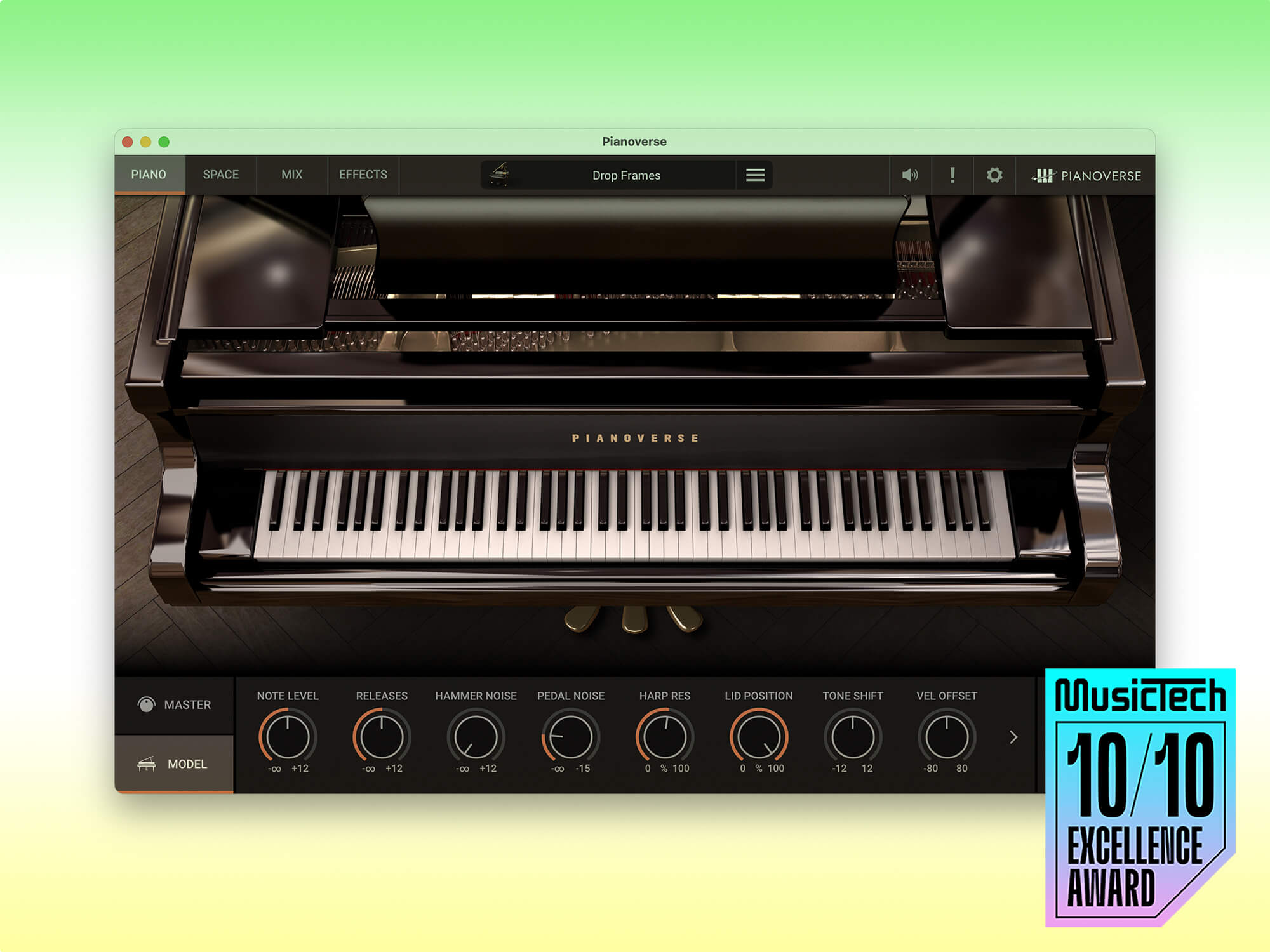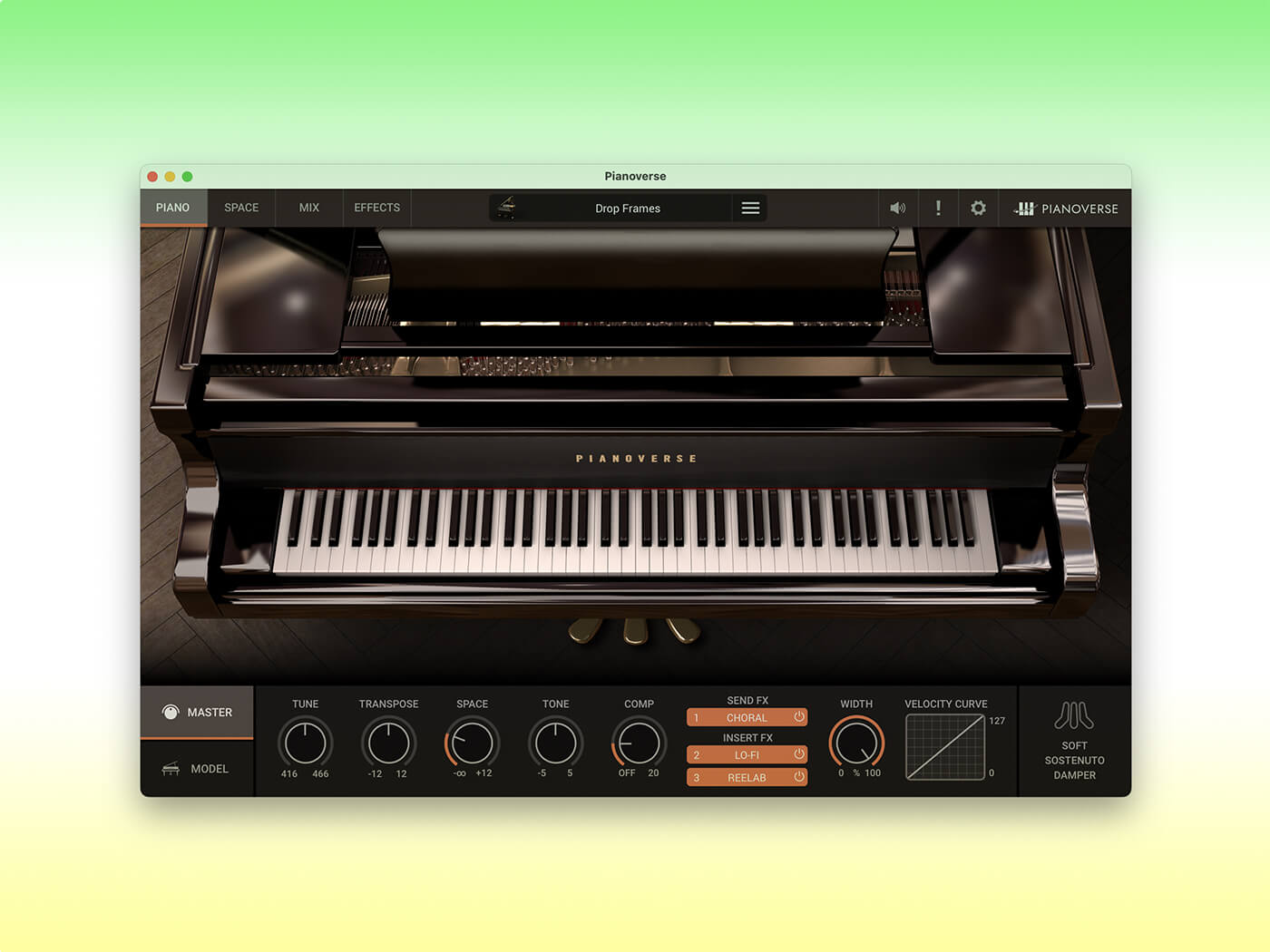IK Multimedia Pianoverse takes classic pianos to the next level
IK’s first dedicated piano instrument uses robot-controlled sampling, but there’s even more technical wizardry going on when you dive under the hood

Review Overview
Our rating
10
Our verdict
⊕ Detailed control over physical behaviour
⊕ Spaces range from conventional to outlandish
⊕ Powerful, extensive effects section allows creative sound design
⊕ Annual plan allows access to all pianos including future models
⊖ No demo version currently available
⊖ File size requires a significant amount of storage
Piano models €99.99 each
All Access monthly plan €14.99 / month
All Access yearly plan €149.99 / year
ikmultimedia.com
IK Multimedia has created a number of sample-based pianos that use the Sampletank architecture but, until now, the Italy-based developer has never made a dedicated standalone piano instrument. Pianoverse changes that; an application and plugin that is designed not only to replicate the sound of classic piano models in fine detail but also lets you go far beyond the sound of a conventional piano with an all-new sound engine. But what could it bring to the table that we haven’t already seen and heard?
The application requires you to download at least one piano model – four are available at the time of review, with several more in development. These weigh in at 30-35 GB each and the four we tested totalled 128GB, which is a significant chunk of even a modern SSD. Luckily the libraries can easily be offloaded to a second drive – even a thumb drive, though you’ll want it to be of adequate speed. We used a 1TB OWC USB-C drive with a read speed of 530 megabytes per second which was plenty fast. You can tweak the application’s buffer settings to tailor performance for a slower or faster drive depending on what you are using.
The pianos are sampled – each note captured at many velocity levels – but IK has taken an unusual approach, building its own sampling robot and bespoke software to perform the recordings. The argument is that this enables the capturing of perfectly consistent strikes at all manner of velocities. At the same time, multiple microphones were used to record the nuance of each element of each piano.
As you’d expect, this provides a great deal of control over the behaviour of each piano. After choosing from the many presets in the browser, with various tags available, you can access the Model menu where you’ll find precise controls for note level, hammer, note release and pedal noise, lid position, a large selection of available filters and more. IK says its sampling techniques make available parameters usually only available in modelled pianos (like Pianoteq) and it’s true that there’s a wealth of customisation available here that goes beyond what you normally see in a sampled instrument.
In the Master section is master tuning and transpose, space, tone, compression and width as well as velocity curves. In these sections, as throughout the instrument, right-clicking on controls brings up MIDI learn assignment options should you wish to automate pedals, filters and the like.
Before going too further we should mention the sound of the pianos in their natural state – before too many effects are added – which is sublime. The four models we tested – Black Diamond B280, Concert Grand YF3, NY Grand S274 and Royal Upright Y5 – are simply gorgeous, their meticulous creation rewarding skilled playing with responsive, nuanced and dynamic results. You will, of course, get the best experience when using a serious MIDI keyboard with weighted keys as well as a sustain pedal or combined pedals. Three are available in software, including continuous values for the points between pedal states.
The next section in the interface is called Space. This allows you to place your piano into one of several virtual spaces, from conventional ones like studios, cathedrals and concert halls to more esoteric locations such as a desert, iceberg or vault. Pianoverse does this using its generative reverb engine, and some of the stranger spaces also have extra parameters like the amount of foliage in a forest environment or the depth of water on the ocean floor. Clearly, the more extreme spaces lend themselves to sound design or score-style piano tones. Still, they’re nice to have alongside the more conventionally useful ‘real’ spaces like stages and studios.

Moving along to the Mix section, you’ll find a choice of close or coincident microphones on one channel and the Spaces signal on another, each with level and pan controls, and a graphic or parametric EQ for each channel plus a choice of four compressor models with dedicated controls.
A Master channel has a further set of effects slots as well as master compression and width to shape the whole output. There’s an extensive 3-slot effects section with 12 effects and alongside effects such as reverb, EQ and chorus are models including Particles (a specialised delay), Reelab (a space echo-style effect) and Convomorph, which morphs between convolution responses. There’s also a modulation section with four sources – two envelopes and two LFOs – that can be assigned to parameters within the effects section.
The presets make extensive use of this wide array of effects and also pre-programmed modulations to animate them. After all, there’s only so far you can go with the sound of a specific ‘real’ piano. And this is where Pianoverse really differentiates itself from other models from Native Instruments‘ or Spitfire Audio’s many sample-based pianos which tend to stick more closely to spatial effect variations.
IK has leveraged its extensive background in synthesis to bring a wider range of effects to Pianoverse and thus open up a new world of possibilities. True, these may be largely in the arena of sound design or scoring once you’ve gone beyond a straight piano-plus-reverb sound, but there’s a lot of call for that sort of thing.
It’s commendable that IK hasn’t gone down a subscription-only route, since some users dislike the idea of never truly owning their software. There’s no demo, unfortunately, but you can subscribe to everything for €15 for a single month, then decide whether to buy any specific piano outright, or continue subscribing. The economics of this will depend on your needs, but it’s nice to have a few options.
Pianoverse is a beautifully sampled instrument and the work the team put into its creation truly shines through when you play it. The application is friendly and well laid out, and the Spaces and effects features add extra dimensions to what you can do with it. It’s an excellent piano (whichever model you choose) but also capable of more weird and wonderful sonic results, making it an easy recommendation for players and sound designers alike.
Key features
- Standalone and plugin operation
- Purchase or subscription model
- All-new sound engine
- Detailed libraries sampled by robot
- Generative reverb engine powers Spaces
- 12 effects over 3 slots plus modulation
- Powerful mixer section
- 2 sets of mics per piano
- Multiple compressor models
- Advanced pedalling options